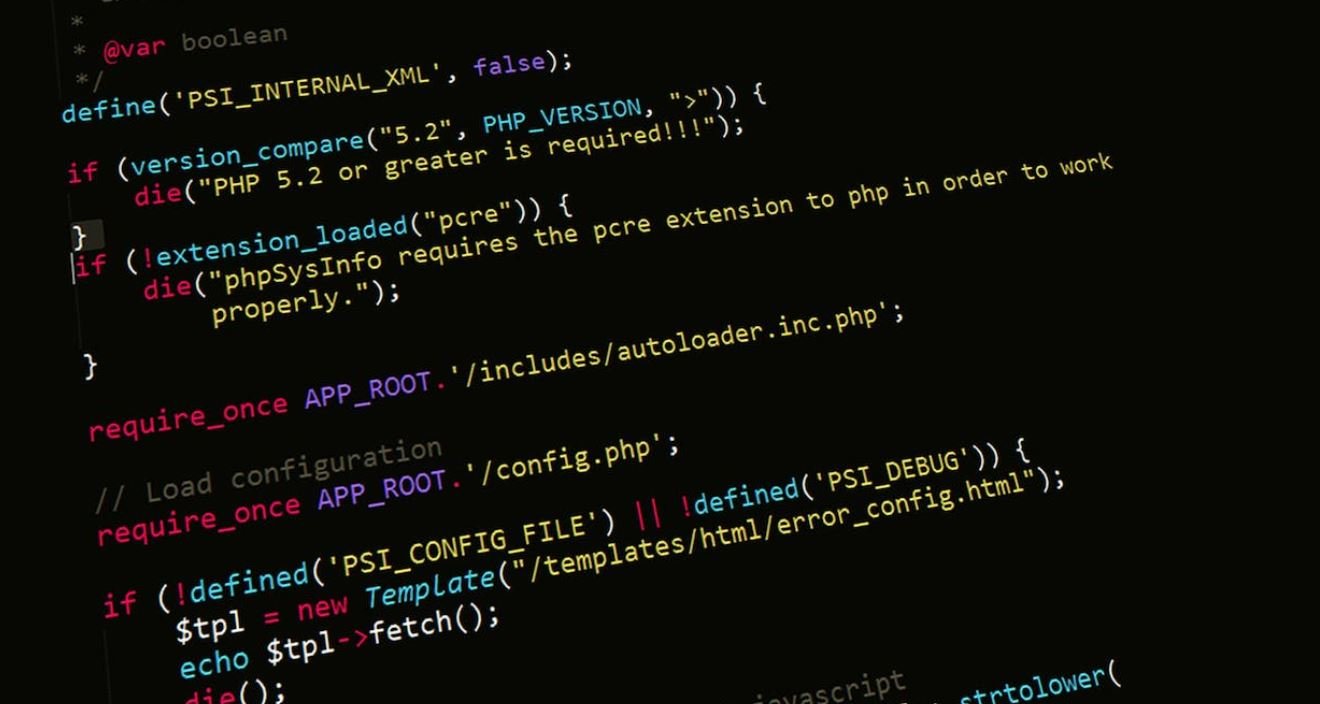AI Tools and Their Functions
Artificial Intelligence (AI) has become an integral part of various industries, revolutionizing the way businesses handle tasks, process data, and make decisions. With the advancements in AI technology, there are now numerous AI tools available that cater to specific functions and tasks. In this article, we will explore some of the popular AI tools and their functions.
Key Takeaways:
- AI tools play a crucial role in enhancing productivity, accuracy, and efficiency in various industries.
- AI tools are designed to perform specific functions like natural language processing, image recognition, and data analysis.
- These tools leverage machine learning algorithms to automate tasks and provide actionable insights.
1. Natural Language Processing (NLP) Tools
One of the most significant applications of AI is natural language processing, which focuses on the interaction between humans and computers through natural language. NLP AI tools are designed to process and analyze vast amounts of textual data, enabling machines to understand and generate human language. These tools have various functions, including:
- **Sentiment analysis**: Identifying and categorizing opinions expressed in text.
- **Named entity recognition**: Extracting and classifying named entities like names, locations, and organizations from text.
- **Text summarization**: Generating concise summaries of long text documents.
One interesting aspect of NLP tools is their ability to analyze online customer reviews and predict customer sentiment towards products or services, helping businesses make data-driven decisions and improve customer satisfaction.
2. Image Recognition Tools
Image recognition AI tools focus on analyzing and interpreting visual content, allowing machines to understand and interpret images and videos. These tools utilize deep learning algorithms to identify objects, people, and scenes in images. Some functionalities of image recognition tools include:
- **Object detection**: Identifying and locating specific objects within an image.
- **Facial recognition**: Recognizing and verifying individuals based on their facial features.
- **Image classification**: Categorizing images into predefined classes or categories.
An exciting aspect of image recognition tools is their application in self-driving cars, where they can identify road signs, pedestrians, and other vehicles, enabling autonomous driving capabilities.
3. Data Analysis Tools
Data analysis AI tools focus on processing and analyzing large datasets to extract valuable insights and patterns. These tools utilize statistical techniques and machine learning algorithms to uncover trends and relationships within the data. Key functionalities of data analysis tools include:
- **Predictive analytics**: Forecasting future outcomes based on historical data.
- **Cluster analysis**: Grouping similar data points together.
- **Anomaly detection**: Identifying unusual patterns or outliers in datasets.
One interesting application of data analysis tools is in the healthcare industry, where they can analyze patient data to predict diseases, recommend personalized treatments, and improve overall patient care.
Comparison of AI Tools:
| AI Tool | Main Function | Industry Applications |
|---|---|---|
| Natural Language Processing (NLP) | Analyze and process human language | Customer service, market research, content generation |
| Image Recognition | Analyze and interpret visual content | Automotive, security, e-commerce |
| Data Analysis | Process and analyze large datasets | Finance, healthcare, marketing |
Conclusion
AI tools have rapidly evolved and are now integral to various industries, providing solutions to complex problems and improving overall efficiency. Natural Language Processing tools help companies understand customer sentiment, while Image Recognition tools enable machines to interpret visual content. Furthermore, Data Analysis tools extract valuable insights from large datasets. These AI tools empower businesses by automating tasks and providing actionable insights for better decision-making.

Common Misconceptions
Misconception 1: AI tools can fully replace human intelligence
One common misconception is that AI tools are capable of completely replacing human intelligence. However, this is not entirely true. While AI can analyze vast amounts of data at an incredible speed and perform specific tasks with high accuracy, it cannot replicate the complex cognitive capabilities and emotional intelligence possessed by humans.
- AI tools excel at processing large amounts of data
- AI tools can automate repetitive tasks
- AI tools can provide insights based on patterns and trends in data
Misconception 2: AI tools are completely autonomous
Another misconception is that AI tools are completely autonomous and can operate without any human intervention. In reality, AI tools require human supervision and guidance to ensure they are working correctly and producing accurate results. Humans are responsible for training, monitoring, and fine-tuning the AI models to align with desired outcomes.
- AI tools require human input for initial training
- Human supervision is necessary to ensure accuracy and prevent bias
- Continuous monitoring is required to refine and improve AI models
Misconception 3: AI tools only work in specific industries
Some people believe that AI tools are limited to specific industries, such as finance or healthcare. However, AI has the potential to be applied across various sectors, including manufacturing, transportation, retail, and many others. AI tools can assist in data analysis, prediction, automation, and optimization in a wide range of fields.
- AI tools find applications in manufacturing processes
- AI tools can optimize supply chain management
- AI tools can improve customer service in retail
Misconception 4: All AI tools are created equal
There is a misconception that all AI tools offer the same capabilities and perform equally. In reality, different AI tools have varying capabilities, strengths, and limitations. Some tools may excel in natural language processing, while others may specialize in image recognition. It is important to understand the specific functionalities and limitations of each AI tool before integrating it into any system.
- Different AI tools have different areas of expertise
- Each AI tool may have unique strengths and weaknesses
- Choosing the right AI tool depends on the desired use case
Misconception 5: AI tools are a threat to job security
Many people fear that the adoption of AI tools will lead to job losses and threaten job security. While AI can automate certain tasks and improve efficiency, it also creates new opportunities and job roles. AI tools can augment human capabilities, allowing individuals to focus on higher-value tasks that require critical thinking, creativity, and emotional intelligence.
- AI tools create new job opportunities in AI development and management
- Humans can collaborate with AI to enhance productivity and innovation
- AI can free up time for humans to focus on complex problem-solving

Introduction
AI (Artificial Intelligence) tools have rapidly become an integral part of various industries. They have revolutionized the way we perform tasks, make decisions, and analyze data. In this article, we will explore 10 fascinating examples of AI tools and their functions, showcasing the incredible capabilities they bring to the table.
1. Sentiment Analysis Software
Sentiment analysis software utilizes natural language processing to analyze text data and determine the sentiment expressed. It is employed by businesses to understand public opinion, customer feedback, and social media trends. For example, it can help companies monitor how people perceive their brand and gauge customer satisfaction levels.
| AI Tool | Function |
|---|---|
| Sentiment Analysis Software | Analyzes text to determine sentiment expressed, facilitating brand perception analysis and customer satisfaction evaluation. |
2. Virtual Assistants
Virtual assistants, such as Siri, Alexa, and Google Assistant, use artificial intelligence to listen, understand, and respond to human queries and commands. They can perform tasks like setting reminders, playing music, or searching the internet, revolutionizing personal convenience and simplifying daily routines.
| AI Tool | Function |
|---|---|
| Virtual Assistants | Listen, understand, and respond to human queries and commands for various tasks like setting reminders and searching the internet. |
3. Predictive Analytics
Predictive analytics tools employ machine learning algorithms to analyze historical data, identify patterns, and make predictions about future outcomes. These tools find applications in industries like finance, healthcare, and marketing, aiding in decision making, risk assessment, and customer targeting.
| AI Tool | Function |
|---|---|
| Predictive Analytics | Analyzes historical data, identifies patterns, and makes predictions to aid in decision making, risk assessment, and customer targeting. |
4. Image Recognition Software
Image recognition software uses deep learning algorithms to analyze visual data and recognize objects, people, or patterns within images or videos. This technology is widely applied in automated surveillance, facial recognition, and quality control processes.
| AI Tool | Function |
|---|---|
| Image Recognition Software | Analyzes visual data to recognize objects, people, or patterns, enabling applications like automated surveillance and facial recognition. |
5. Natural Language Generation
Natural language generation tools use AI algorithms to convert structured data into human-readable text. These tools are employed to automatically generate reports, product descriptions, or news articles, saving time and effort in content creation.
| AI Tool | Function |
|---|---|
| Natural Language Generation | Converts structured data into human-readable text, automating tasks like report generation and content creation. |
6. Chatbots
Chatbots are AI-powered conversational agents that interact with users via text or voice. They provide automated customer support, assist in sales processes, and deliver personalized product recommendations. Chatbots enhance customer experiences and promote self-service.
| AI Tool | Function |
|---|---|
| Chatbots | Interact with users to provide customer support, assist in sales, and offer personalized recommendations. |
7. Fraud Detection Algorithms
Fraud detection algorithms employ AI techniques to identify patterns and anomalies in data, enabling the rapid detection of fraudulent activities. These algorithms are utilized by financial institutions and e-commerce platforms to minimize losses and protect users.
| AI Tool | Function |
|---|---|
| Fraud Detection Algorithms | Identifies patterns and anomalies in data to detect fraudulent activities, protecting financial institutions and e-commerce platforms. |
8. Recommendation Systems
Recommendation systems use AI algorithms to analyze user behavior and preferences, providing personalized suggestions and recommendations. These systems are widely implemented in e-commerce platforms, streaming services, and content platforms, enhancing user experiences and improving customer engagement.
| AI Tool | Function |
|---|---|
| Recommendation Systems | Analyze user behavior and preferences to provide personalized suggestions, enhancing user experiences and improving customer engagement. |
9. Autonomous Vehicles
Autonomous vehicles represent a cutting-edge application of AI. These self-driving cars leverage AI technologies, including computer vision and deep learning, to navigate and make decisions on the road. Autonomous vehicles aim to enhance safety, reduce traffic congestion, and revolutionize the transportation industry.
| AI Tool | Function |
|---|---|
| Autonomous Vehicles | Leverages AI technologies to navigate and make decisions on the road, enhancing safety and revolutionizing transportation. |
10. Robot-Assisted Surgery
Robot-assisted surgery involves the use of robotic systems controlled by AI algorithms to aid surgeons during various procedures. These systems provide precision, stability, and minimally invasive techniques, leading to improved surgical outcomes and faster patient recovery times.
| AI Tool | Function |
|---|---|
| Robot-Assisted Surgery | Uses robotic systems controlled by AI algorithms to aid surgeons during procedures, ensuring precision and improving patient outcomes. |
Conclusion
AI tools have revolutionized countless industries by automating tasks, improving decision making, and enhancing user experiences. They have become invaluable assets in areas such as sentiment analysis, virtual assistance, predictive analytics, image recognition, and natural language generation. Additionally, tools like chatbots, fraud detection algorithms, recommendation systems, autonomous vehicles, and robot-assisted surgery have transformed their respective fields. The rapid evolution and widespread adoption of AI tools continue to shape the way we live and work, ushering in a new era of possibilities.
Frequently Asked Questions
What are AI tools?
AI tools, also known as artificial intelligence tools, are software applications or platforms that utilize AI technologies to perform specific tasks or functions. These tools are designed to mimic human intelligence and perform tasks such as data analysis, speech recognition, natural language processing, image recognition, and more.
How do AI tools work?
AI tools work by using various algorithms and techniques to process and analyze large amounts of data. They employ machine learning, deep learning, and other AI methodologies to learn from the data and make predictions or perform specific tasks. These tools can be trained using labeled data, and they continuously improve their performance as they encounter more data.
What are the benefits of using AI tools?
Using AI tools can provide many benefits, including improved efficiency, accuracy, and productivity. These tools can automate repetitive tasks, analyze large datasets quickly, make predictions based on patterns, and provide actionable insights. They can also help businesses make informed decisions, enhance customer experiences, and streamline processes.
What are some common types of AI tools?
Some common types of AI tools include natural language processing (NLP) tools, machine learning platforms, computer vision tools, virtual assistants, chatbots, recommendation systems, and predictive analytics tools. Each type of tool serves a specific purpose and can be used in various industries, such as healthcare, finance, marketing, and more.
Can AI tools replace human jobs?
While AI tools can automate certain tasks and improve efficiency, they are not designed to replace human jobs entirely. AI tools are created to augment and enhance human capabilities rather than eliminate them. These tools can handle repetitive and mundane tasks, enabling humans to focus on more complex and value-added work.
Are AI tools only useful for large enterprises?
No, AI tools can be beneficial for businesses of all sizes. While larger enterprises may have more resources to invest in AI research and development, there are also AI tools available for small and medium-sized businesses. These tools can help businesses of any size gain a competitive edge, improve decision-making, and optimize operations.
How can AI tools be integrated into existing systems?
AI tools can be integrated into existing systems through APIs (Application Programming Interfaces) or SDKs (Software Development Kits). By leveraging these integration methods, businesses can incorporate AI functionality into their existing software or platforms seamlessly. This allows them to take advantage of AI capabilities without major disruptions to their current systems.
What considerations should be made when selecting AI tools?
When selecting AI tools, several key considerations should be made. These include the specific needs and goals of the business, the technical capabilities and compatibility of the tools, the reliability and performance of the tools, the availability of support and updates, the cost and return on investment, and the credibility and reputation of the tool’s provider.
What are some challenges in implementing AI tools?
Implementing AI tools can come with certain challenges. Some common challenges include the need for extensive data preparation and cleaning, the requirement for skilled AI professionals, the potential for biased or inaccurate predictions, the ethical considerations surrounding AI usage, and the need for ongoing monitoring and maintenance of the AI tools.
Can AI tools be customized for specific needs?
Yes, AI tools can often be customized to fit specific needs. Many AI tools offer flexibility and allow businesses to train the tools using their own data or adjust the algorithms and parameters to match their requirements. Customization options can vary depending on the specific tool and its capabilities.





